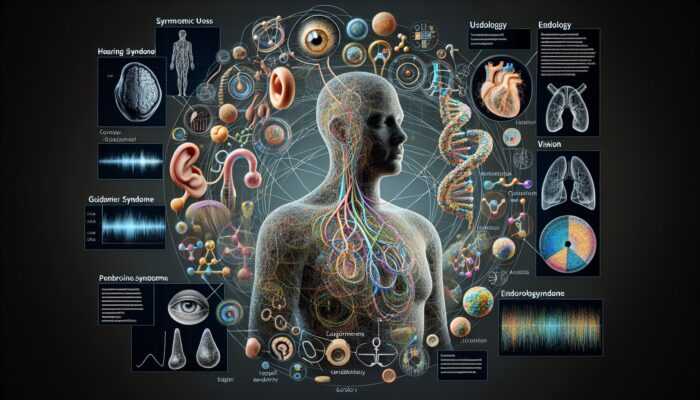Last Updated on 24/06/2025 by Admin
Boosting Brain Health through Enhanced Cognitive Function
Unlocking Improved Memory Retention

The intricate connection between hearing and memory is vital for cognitive performance. When individuals face challenges in hearing, their brains must work overtime to interpret sounds, which can lead to cognitive strain and memory issues. Utilizing Hearing aids provides users with enhanced auditory input, fundamentally improving their ability to retain and recall information. This stimulation of auditory pathways not only aids in sound retention but also enriches the sensory experience, leading to more robust memories.
Picture yourself at a lecture or social event. Without hearing aids, crucial details might slip through the cracks, resulting in fragmented memories. In contrast, with improved sound clarity, users can immerse themselves in discussions, effectively absorbing and retaining critical information. Research indicates that individuals using hearing aids often report greater satisfaction regarding their memory capabilities. This improvement is particularly significant for older adults facing age-related memory decline, as ongoing social interaction sharpens cognitive functions and greatly enhances their quality of life.
Moreover, the concept of improved memory expands beyond simply remembering facts; it encompasses emotional and contextual connections to experiences. The enriched auditory input provided by hearing aids allows users to engage deeply in conversations, building emotional links that strengthen memories. This is especially important in multicultural settings where various languages and dialects are present. The ability to connect with diverse cultures through clear auditory experiences enriches personal memories, illustrating how hearing aids can profoundly impact brain health.
Maximizing Attention and Focus
Hearing loss often poses a significant obstacle to effective communication, making it challenging for individuals to concentrate on conversations and tasks. Hearing aids amplify relevant sounds, enabling users to focus on crucial auditory cues while filtering out unnecessary distractions. This targeted auditory enhancement is essential for improving attention, allowing individuals to engage more profoundly in discussions and absorb information effectively.
Imagine navigating a crowded café or a lively street market where countless sounds compete for your attention. For someone with hearing impairment, this overwhelming noise can lead to fragmented attention and missed social opportunities. Hearing aids alleviate this challenge by boosting specific sounds, empowering users to connect meaningfully with their surroundings. This enhancement not only fosters social interactions but also aids cognitive tasks, enabling users to concentrate better on work or leisure activities.
Studies show that improved attention spans can lead to enhanced performance in both academic and professional settings. With heightened focus, users can absorb information more thoroughly, actively contribute to discussions, and clarify their thoughts. This increased attention can also lead to better decision-making abilities, as individuals can weigh options more effectively when they can hear and process information clearly. Ultimately, enhanced auditory experiences through hearing aids create a cognitive environment that nurtures attention and engagement.
Accelerating Auditory Processing Speed
The speed at which the brain processes auditory information is crucial for effective communication and cognitive responsiveness. Hearing aids significantly enhance this processing speed, enabling users to react more promptly during conversations and auditory interactions. This advantage is particularly vital in dynamic environments where quick thinking is required, such as during team meetings or discussions in culturally diverse contexts.
When auditory input is unclear, the brain struggles to interpret messages, resulting in delayed responses and cognitive fatigue. Hearing aids remove this barrier by delivering clear sound signals, expediting the brain’s ability to process information. This quick processing not only facilitates immediate communication but also enhances overall cognitive agility, making it easier for users to adapt to different contexts and discussions.
Additionally, improved processing speed fosters confidence. Users who can respond quickly and clearly in social or professional environments are less likely to feel overwhelmed or isolated. This newfound confidence translates into more active participation in conversations, which leads to richer interpersonal relationships. Research suggests that individuals who regularly engage in discussions with enhanced auditory clarity experience improved cognitive responses and overall brain function. These findings underscore the significant role of hearing aids in supporting brain health through enhanced processing capabilities.
Boosting Mental Agility and Flexibility

Cognitive flexibility is a crucial aspect of mental agility, enabling individuals to adapt to new information and experiences seamlessly. Hearing aids play a significant role in enhancing this cognitive trait by improving sound clarity, ensuring users can engage effectively in a variety of mental tasks. The ability to differentiate between diverse sounds and dialogues sharpens mental agility, making it easier to switch between tasks and respond to changing environments.
In scenarios involving cross-cultural interactions, interpreting different languages or dialects can be critical. Hearing aids facilitate this process by providing users with clearer auditory signals, allowing for a more nuanced understanding of conversations. This adaptability not only elevates personal interactions but also bolsters professional engagements where quick thinking and mental agility are paramount.
Users of hearing aids frequently report increased confidence in their cognitive abilities. This newfound self-assurance can lead to engaging in more complex conversations or tackling challenging mental tasks, further fostering cognitive development. As users grow more comfortable navigating their environments, they practice and enhance their cognitive flexibility, resulting in a more dynamic mental state. By consistently challenging their cognitive limits, hearing aid users can cultivate a vibrant and agile mind, highlighting the integral role of these devices in supporting overall brain health.
Mitigating Cognitive Decline
Preventing Brain Atrophy through Constant Engagement
Brain atrophy, characterized by a reduction in brain mass, is a troubling consequence of cognitive decline. Regular use of hearing aids has emerged as an effective strategy to combat this issue. When auditory stimuli are reduced, the areas of the brain responsible for processing sound can weaken, leading to atrophy over time. Hearing aids help maintain essential auditory input, preventing this shrinkage and supporting overall brain integrity.
Research shows that individuals who wear hearing aids experience less brain atrophy compared to those who do not address their hearing loss. By ensuring that the brain remains actively engaged in processing auditory information, hearing aids help combat the deterioration associated with cognitive decline. This engagement goes beyond hearing; it fosters a rich auditory environment that stimulates various brain regions, nurturing their health and functionality.
Moreover, engaging with sounds and conversations promotes the formation of new neural connections, which is crucial for maintaining brain health. By actively processing auditory input, users not only preserve existing brain structures but also encourage the growth of new pathways. This neuroplasticity is essential in mitigating age-related effects on the brain, allowing users to maintain cognitive functions for a longer duration. The relationship between hearing aids and brain atrophy highlights the profound impact these devices have on sustaining cognitive vitality over time.
Reducing Dementia Risks through Enhanced Engagement

The link between untreated hearing loss and an increased risk of dementia is becoming increasingly evident. Studies indicate that individuals who utilize hearing aids present a significantly lower risk of developing dementia compared to those who do not address their hearing loss. This finding emphasizes the importance of how hearing aids support brain health and mitigate the factors contributing to cognitive decline.
The mechanics behind this relationship are complex. Hearing loss forces the brain to work harder, leading to cognitive fatigue and potential deterioration over time. By utilizing hearing aids to facilitate clearer auditory input, users alleviate the cognitive load on their brains, promoting better overall mental health. This reduction is crucial; a relaxed and engaged brain is far less susceptible to the degenerative effects of aging and cognitive decline.
Furthermore, maintaining social connections is vital in combating dementia risk. Hearing aids encourage users to actively participate in their communities, fostering relationships that provide emotional support and cognitive stimulation. Engaging in meaningful conversations enhances mental resilience, further decreasing the likelihood of cognitive decline. The role of hearing aids in facilitating communication and safeguarding against dementia highlights their critical importance in promoting brain health.
Maintaining Cognitive Agility for Lifelong Health
Maintaining mental agility is essential for cognitive health, enabling individuals to navigate complex environments and adapt to new information with ease. Hearing aids are pivotal in preserving this agility by ensuring users receive consistent auditory input. This ongoing engagement is crucial for cognitive health, as it keeps the brain active and responsive.
As users interact with their surroundings through improved auditory experiences, they are more likely to remain mentally sharp. Engaging in conversations, whether in social settings or professional environments, stimulates the brain and fosters cognitive resilience. Hearing aids ensure that users can participate fully, reducing feelings of isolation and enhancing their overall mental well-being.
Additionally, the ability to hear clearly enables the practice of critical thinking and problem-solving skills. In diverse settings where multitasking is essential, hearing aids provide the clarity needed to process information efficiently. As users adapt to various conversations and environments, they continuously hone their mental agility, showcasing the profound impact of hearing aids on sustaining cognitive vitality. Ongoing engagement with auditory stimuli acts as a safeguard against cognitive decline, emphasizing the importance of these devices in maintaining a vibrant mind.
Enhancing Social Engagement through Better Hearing
Improving Communication Clarity and Confidence
Effective communication is the cornerstone of robust social engagement, and hearing aids significantly enhance this ability for users. By amplifying sounds and ensuring clarity in conversations, these devices allow individuals to partake in discussions without the constant worry of missing essential points. This not only leads to a more satisfying social experience but also cultivates deeper connections with others.
Imagine attending a global conference where a variety of accents and languages fill the air. For someone with hearing difficulties, this environment can feel isolating. However, with hearing aids, individuals can engage clearly with speakers and fellow attendees, resulting in richer discussions and collaborative opportunities. This enhanced communication capability empowers users to share their thoughts and insights freely, which is instrumental in both personal and professional realms.
Research consistently shows that effective communication leads to improved relationships, both socially and emotionally. When individuals can express themselves clearly and understand others, they experience a sense of belonging and connection. This social inclusion is crucial for mental health, as it combats feelings of loneliness and enhances overall quality of life. Hearing aids bridge the gap between isolation and engagement, highlighting their pivotal role in fostering strong communication networks.
Fostering Increased Social Interaction
The barrier posed by hearing loss often leads individuals to withdraw from social activities, amplifying feelings of isolation. Hearing aids serve as a transformative solution, empowering individuals to engage more actively in social settings. By improving auditory clarity, these devices encourage users to participate in gatherings, discussions, and various cultural activities without the fear of missing out.
Consider cultural events or community gatherings where the richness of interaction is paramount. Hearing aids allow users to immerse themselves fully, enjoying shared stories, laughter, and connections across diverse backgrounds. This engagement is vital for mental well-being as it fosters a sense of community and belonging.
Moreover, increased social interaction has profound implications for cognitive health. Engaging in conversations and participating in social activities stimulates the brain, encouraging the formation of new neural connections. This ongoing mental challenge is essential for maintaining cognitive agility and resilience. As users actively participate in their social circles, they not only enhance their interpersonal relationships but also positively contribute to their mental health, reinforcing the critical role of hearing aids in social engagement.
Enhancing Emotional Health through Connection
The emotional landscape is intricately tied to the quality of social interactions. Hearing aids can lead to improved emotional well-being by facilitating clearer communication and fostering richer connections. When users can engage meaningfully with others, it enhances their overall emotional health, reducing feelings of loneliness or anxiety that often accompany hearing loss.
Research supports the idea that individuals who maintain strong social connections experience better emotional health outcomes. Hearing aids enable users to participate in conversations more confidently, allowing them to convey their thoughts and feelings effectively. This increased involvement not only enriches their lives but also strengthens their relationships, paving the way for a support system that enhances mental well-being.
Additionally, better emotional health fosters resilience in facing life’s challenges. Users who feel connected and understood are more capable of managing stress and emotional upheaval. Hearing aids, by promoting social engagement, play a crucial role in creating a robust emotional support network that contributes to overall mental health. This interplay between clear communication and emotional well-being emphasizes the vital importance of hearing aids in enhancing quality of life.
Supporting Mental Well-being through Clarity and Connection
Reducing Stress and Enhancing Peace of Mind
Stress can be an insidious factor contributing to a decline in mental well-being. Individuals grappling with hearing loss often experience heightened levels of stress due to challenges in communication and social interaction. Hearing aids serve as a practical solution, significantly alleviating the stress associated with auditory difficulties. By providing clear auditory input, these devices lessen the mental strain of trying to decipher conversations and sounds.
The relief from auditory strain leads to a more relaxed state of mind, enabling users to engage in discussions without the fear of misunderstandings. Imagine attending a family gathering filled with laughter and chatter. For those equipped with hearing aids, the experience is enriched; they can fully participate without the constant pressure of guessing what is being said. This active engagement promotes relaxation and emotional stability, showcasing the profound impact of clear hearing on mental health.
Furthermore, alleviating stress fosters better overall cognitive function. When the brain is not overwhelmed by the effort to hear, it can focus on processing information and engaging meaningfully with others. This clarity enhances mental resilience, allowing users to approach various situations with confidence and composure. By reducing stress through improved auditory experiences, hearing aids play a pivotal role in promoting a healthier mental state.
Boosting Confidence in Social and Professional Settings
Confidence serves as a powerful catalyst for mental well-being, and hearing aids significantly contribute to enhancing self-esteem for users. The ability to hear clearly in social and professional contexts empowers individuals to engage more fully in conversations, nurturing a sense of agency and control over their interactions. This newfound confidence can lead to increased participation in various aspects of life, from career endeavors to social gatherings.
Consider the impact during a job interview or an essential presentation. Individuals with hearing aids can engage more effectively, posing questions and contributing ideas with clarity. This confidence not only enhances their performance but also leaves a lasting impression on others. The positive feedback received in these scenarios reinforces their self-assurance, creating a virtuous cycle of confidence and engagement.
Moreover, confidence in communication correlates with improved emotional health. Users who feel assured in their ability to interact with others are less likely to experience anxiety or withdrawal. This sense of belonging and connection fosters emotional resilience, further enhancing their overall mental well-being. The role of hearing aids in bolstering confidence underscores their significance in cultivating a fulfilling and engaged life.
Alleviating Depression through Enhanced Connections
Depression often intertwines with the experience of hearing loss, as individuals may feel isolated or disconnected from their social circles. Hearing aids can play a pivotal role in alleviating these feelings by facilitating better communication and engagement. Users who can hear clearly are more likely to partake in social activities, thereby reducing the risk of loneliness and depressive symptoms.
Research demonstrates a strong correlation between social engagement and mental health. By utilizing hearing aids, individuals can forge deeper connections with family and friends, cultivating a support system essential for emotional well-being. Engaging in meaningful conversations and activities uplifts spirits and provides the necessary stimulation for cognitive health.
Additionally, maintaining social interactions through clear communication can offer a sense of purpose and belonging. This engagement helps counteract feelings of worthlessness that may accompany depression, empowering users to reclaim their social lives. The impact of hearing aids on alleviating depression highlights their critical role in enhancing mental health and promoting a vibrant, fulfilling life.
Enhancing Cognitive Function for Lifelong Mental Agility
Clear hearing significantly reduces the mental effort required to process sounds, which can contribute to cognitive decline. Hearing aids enhance auditory clarity, ensuring that users receive necessary auditory signals. This reduction in cognitive load not only fosters better communication but also helps maintain cognitive health, allowing users to engage more meaningfully with their environments.
As individuals interact with the world through improved hearing, they are more likely to remain mentally active. Engaging with various sounds, conversations, and experiences stimulates the brain, reinforcing neural connections vital for cognitive function. The ongoing exposure to auditory stimuli through hearing aids acts as a safeguard against cognitive decline, highlighting the profound connection between clear hearing and sustained cognitive health.
Furthermore, the emotional benefits derived from improved hearing play a crucial role in cognitive function. Users who feel connected and engaged in their social circles experience better mental clarity and resilience. This interplay between hearing aids, cognitive health, and emotional well-being showcases the holistic benefits of these devices, emphasizing their essential role in fostering a vibrant and engaged life.
Improving Emotional Well-being through Social Engagement
Emotional well-being is deeply intertwined with social engagement and effective communication. Hearing aids enhance emotional health by providing users with the necessary tools to navigate social interactions without frustration or anxiety. This increased ability to engage with others fosters a sense of belonging and emotional support, crucial for mental well-being.
When individuals can communicate clearly, they are more likely to express themselves authentically, leading to deeper connections with others. These connections bolster emotional resilience, providing a safety net during challenging times. The sense of community and support gained through clear communication is invaluable, reinforcing the notion that hearing aids are not just tools for sound but also vital instruments for emotional health.
Moreover, the reduction of isolation experienced by hearing aid users contributes significantly to their emotional well-being. As they engage more actively in their communities, they find joy in shared experiences and the camaraderie of meaningful relationships. This engagement enhances overall happiness and satisfaction in life, highlighting the essential role of hearing aids in promoting a healthy emotional landscape.
Enhancing Auditory Stimulation for Brain Resilience
Stimulating Brain Activity through Continuous Engagement
The brain thrives on stimulation, and auditory input plays a crucial role in maintaining cognitive function. Hearing aids provide necessary auditory stimulation, ensuring that the brain remains active and engaged. This constant engagement is vital for sustaining cognitive health and preventing decline.
When auditory input is reduced, the brain can become less active, potentially leading to atrophy and cognitive decline. Hearing aids rectify this by offering enhanced sound clarity, enabling users to engage fully with their environments. Whether enjoying music, participating in conversations, or simply hearing nature’s sounds, auditory stimulation fosters a vibrant cognitive landscape.
Moreover, studies illustrate that consistent auditory engagement through hearing aids can promote neuroplasticity, the brain’s ability to reorganize itself. This adaptability is essential for learning and memory, allowing individuals to maintain mental agility as they age. The role of hearing aids in stimulating brain activity underscores their importance in supporting cognitive health and overall brain function.
Improving Sound Localization Skills
The ability to accurately locate sounds is vital for effective communication and interaction with one’s environment. Hearing aids enhance this skill, enabling users to discern the origin of sounds, which engages different parts of the brain. This capability goes beyond hearing; it encompasses cognitive mapping and situational awareness.
Consider a bustling marketplace where sounds emerge from various directions. For individuals with hearing difficulties, identifying the source of sounds can be a challenge. Hearing aids facilitate this process, empowering users to navigate their environments more effectively. This enhancement of sound localization fosters greater independence and confidence, positively impacting overall mental health.
Furthermore, improved sound localization enriches social interactions. Users can engage in conversations with greater ease since they can identify and focus on the speaker amidst background noise. This clarity enhances communication, reinforcing social bonds and fostering a sense of belonging. The ability to accurately localize sounds underscores the multifaceted benefits of hearing aids in supporting cognitive function and social engagement.
Enhancing Sound Clarity for Optimal Communication
Sound clarity is paramount for effective communication and cognitive engagement. Hearing aids amplify sounds with precision, ensuring that users receive clear auditory signals necessary for understanding. This enhancement is crucial for navigating social situations and maintaining cognitive health.
When sounds are distorted or faint, processing them can become challenging, leading to misunderstandings and frustration. Hearing aids address this issue by providing users with crisp, clear sound. This clarity allows individuals to engage fully in conversations, reducing cognitive load and enhancing overall comprehension.
Moreover, improved sound clarity contributes significantly to emotional well-being. Users who can communicate effectively are more likely to feel connected to others, reducing feelings of isolation or anxiety. This connection fosters a supportive social network, which is essential for mental health. The importance of sound clarity in promoting cognitive engagement and emotional well-being illustrates the vital role of hearing aids in enhancing quality of life.
Increasing Auditory Processing Speed for Enhanced Communication
The speed at which the brain processes sounds significantly impacts communication and cognitive function. Hearing aids enhance this processing speed, allowing users to respond more swiftly in conversations and various auditory settings. This advantage is particularly crucial in dynamic environments where quick thinking is necessary.
When auditory input is unclear, the brain struggles to keep up, leading to delays in response and potential misunderstandings. Hearing aids eliminate this challenge by providing clear sound signals, facilitating quicker processing. This swift cognitive response not only enhances communication but also improves overall mental agility.
Moreover, the increase in auditory processing speed fosters confidence in social interactions. Users are more likely to engage actively in conversations when they can respond quickly and clearly. This engagement enhances interpersonal relationships, reducing feelings of isolation and promoting emotional well-being. The connection between auditory processing speed and cognitive health highlights the transformative power of hearing aids in supporting overall brain function.
Supporting Language Development for All Ages
Language development, particularly in children, is significantly influenced by auditory input. Hearing aids provide enhanced auditory experiences, which are crucial for language acquisition and comprehension. This support is not only essential for cognitive development but also for social interaction and emotional well-being.
In children with hearing loss, the lack of clear auditory input can hinder language skills. Hearing aids rectify this by ensuring that sounds, words, and phonetics are heard clearly, facilitating successful language development. This enhancement allows children to engage in conversations, learn new vocabulary, and express themselves more effectively.
For adults seeking to learn new languages or engage in multilingual environments, hearing aids similarly provide a critical advantage. The clarity of sound facilitates better pronunciation and comprehension, enabling individuals to navigate diverse linguistic landscapes confidently. The role of hearing aids in supporting language development underscores their importance in fostering cognitive and social growth across various age groups.
Promoting Brain Plasticity for Lifelong Learning
Encouraging Neural Adaptation and Flexibility
Neural adaptation represents the brain’s remarkable ability to reorganize and form new connections in response to stimuli. Hearing aids play a crucial role in promoting this adaptation by providing consistent auditory input. This engagement is essential for maintaining and enhancing cognitive function throughout life.
When individuals experience hearing loss, the brain’s auditory pathways may weaken due to insufficient stimulation. Hearing aids rectify this by ensuring continuous auditory engagement, allowing the brain to remain active and adaptable. This stimulation encourages the formation of new neural connections, vital for cognitive resilience and overall brain health.
Moreover, the practice of engaging with various sounds and conversations fosters cognitive flexibility. Users who can navigate diverse auditory environments are better equipped to adapt to new information and challenges. This adaptability is crucial for lifelong learning and cognitive growth, showcasing the transformative impact of hearing aids on promoting brain plasticity.
Supporting Neurogenesis for Cognitive Vitality
Neurogenesis, the process of generating new neurons, is essential for maintaining cognitive health. Regular auditory stimulation from hearing aids can support this process, enhancing overall brain plasticity. By providing consistent auditory input, hearing aids foster an environment conducive to neurogenesis, promoting cognitive vitality.
Research indicates that engaging with sounds and language activates regions of the brain involved in neurogenesis. Hearing aids facilitate this engagement, ensuring that users receive the auditory stimuli necessary for neuron growth. This stimulation encompasses more than just hearing; it involves creating a rich auditory landscape that nurtures cognitive development.
Additionally, supporting neurogenesis is vital for combating age-related cognitive decline. As individuals age, the ability to generate new neurons may diminish. Hearing aids can help counteract this decline by providing the auditory engagement necessary for sustaining cognitive health. The relationship between hearing aids and neurogenesis emphasizes their critical role in promoting brain vitality throughout life.
Facilitating Synaptic Plasticity for Learning and Memory
Synaptic plasticity, the ability of synapses to strengthen or weaken over time, is crucial for effective learning and memory retention. Hearing aids facilitate this process by enhancing auditory input and ensuring consistent engagement with sounds. This ongoing auditory stimulation fosters a dynamic cognitive environment crucial for effective learning and memory retention.
When auditory pathways are stimulated through hearing aids, synapses become more robust, enhancing communication between neurons. This strengthening of synaptic connections is essential for maintaining cognitive agility and resilience. Users who engage regularly with clear auditory signals are more likely to experience improved memory and learning outcomes.
Moreover, the benefits of synaptic plasticity extend beyond individual cognitive functions. As users engage in conversations and social interactions, they contribute to a community of learning and sharing. This environment promotes collective cognitive growth, showcasing the broader societal impact of how hearing aids support brain health. By facilitating synaptic plasticity, hearing aids empower individuals to thrive in their cognitive pursuits and navigate their worlds with confidence.
Enhancing Quality of Life through Improved Hearing
Optimizing Daily Activities with Enhanced Hearing
The integration of hearing aids into daily life can significantly enhance the ability to engage in everyday activities. Whether it’s enjoying a conversation with a friend, participating in a community event, or navigating public spaces, clear hearing fosters a sense of agency and belonging. This empowerment is essential for a fulfilling life, allowing individuals to fully engage in experiences that matter to them.
Imagine the joy of participating in family gatherings, where laughter and conversation flow freely. Hearing aids enable users to immerse themselves in these moments, contributing to shared stories and memories that enrich their lives. This engagement is not only pleasurable but also vital for emotional well-being, as it fosters connections and bonds with loved ones.
Furthermore, improved hearing contributes to safety and independence. Individuals can navigate their environments confidently, responding effectively to auditory cues, such as alarms, traffic signals, or conversations. This independence enhances overall quality of life, allowing users to participate actively in their communities. The profound impact of hearing aids on daily activities illustrates their essential role in promoting a vibrant and engaged life.
Increasing Independence through Clear Auditory Input
Independence is a cornerstone of quality of life, and hearing aids significantly contribute to empowering users. By providing clear auditory input, these devices allow individuals to engage confidently with their environments. This newfound independence fosters a sense of agency, enabling users to navigate social situations and daily tasks without hesitation.
Consider the difference between feeling isolated and empowered in a bustling café. Hearing aids facilitate active participation in conversations, allowing users to engage without the constant fear of misunderstanding. This confidence translates into broader social interactions, enhancing overall life satisfaction.
Moreover, the ability to hear clearly enhances safety. Users can promptly respond to important auditory signals, such as traffic sounds or emergency alerts. This heightened awareness reinforces their independence, enabling them to manage their daily lives effectively. The role of hearing aids in promoting independence underscores their significance in enhancing overall quality of life.
Boosting Overall Well-being through Social Connections
The integration of hearing aids into daily life results in a notable boost in overall well-being. Users experience enhanced communication, greater social engagement, and improved emotional health, all of which contribute to a greater sense of fulfillment and happiness. This holistic improvement showcases the transformative power of hearing aids in supporting brain health.
As individuals engage more actively with their surroundings, they cultivate a sense of belonging and connection. This engagement fosters emotional resilience, allowing users to navigate life’s challenges with confidence. Research underscores the correlation between social interaction and well-being, highlighting the role of hearing aids in facilitating these connections.
Additionally, enhanced auditory experiences lead to greater cognitive engagement, stimulating the brain and promoting mental vitality. The interplay between hearing, cognitive function, and emotional health illustrates the importance of hearing aids in fostering a vibrant life. Ultimately, hearing aids are not merely devices; they are lifelines that enhance overall well-being and support a fulfilling existence.
FAQs: Addressing Common Questions about Hearing Aids
How do hearing aids support brain health?
Hearing aids improve auditory input, enhancing cognitive functions such as memory, attention, and processing speed. They also reduce the risk of cognitive decline and promote social engagement, significantly benefiting overall brain health.
Can hearing aids prevent dementia?
Research indicates that regular use of hearing aids lowers the risk of dementia by keeping the brain engaged and reducing cognitive overload, thereby supporting overall cognitive health.
Do hearing aids improve social interactions?
Yes, hearing aids facilitate clearer communication, allowing users to engage more actively in social settings, reducing isolation, and enhancing emotional well-being.
How do hearing aids reduce stress?
By alleviating the challenges of hearing loss, hearing aids reduce the cognitive load associated with trying to understand sounds, leading to a more relaxed and stress-free experience.
What role do hearing aids play in emotional health?
Hearing aids improve communication and social engagement, fostering deeper connections and reducing feelings of loneliness, ultimately enhancing emotional well-being.
Can hearing aids help with memory retention?
Yes, by providing clearer auditory input, hearing aids enhance memory retention and recall, allowing users to engage more effectively in conversations and experiences.
How do hearing aids promote brain plasticity?
By providing consistent auditory stimulation, hearing aids encourage neural adaptation and the formation of new connections, promoting brain plasticity and cognitive resilience.
Do hearing aids enhance daily activities?
Absolutely! Hearing aids improve the ability to engage in daily activities, facilitating participation in conversations, community events, and everyday tasks with confidence.
What is the impact of hearing aids on cognitive function?
Hearing aids enhance cognitive functions such as attention, memory, and processing speed, significantly contributing to better overall brain health and mental agility.
Are there emotional benefits to using hearing aids?
Yes, improved communication through hearing aids fosters emotional connections, reduces feelings of isolation, and enhances overall emotional well-being, contributing to a fulfilling life.
Explore more with us on X!
The post Hearing Aids and Brain Health: Essential Benefits Explained appeared first on The Microsuction Ear Wax Removal Network.















